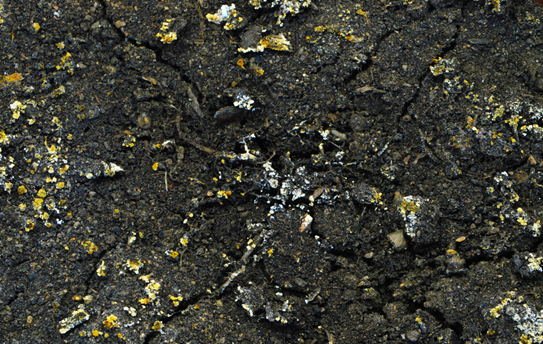My warm greetings to all #Hivers.
In this series, I will be talking about pollution dues to indiscriminate disposal of waste engine oil and a cheap mean of remediating it. I hope you will enjoy reading it.

Fig 1. Channel of waste engine oil to the environment
Introduction
What is/are waste Engine oil
Waste engine oil is basically black used oil, the majority of which are obtained from car engines, truck engines or heavy machinery. They are sometimes referred to as contaminated or impure oil giving the fact that they have been mixed with other substances. They are high pollutants that needs responsible management. But, in country such as Nigeria disposal of waste engine oil into gutters, water channel, open vacant plots and farmland is a common practice, especially by motor mechanics that change oil from motor vehicles, power generating sets and other machines. The current manner of indiscriminate disposal of waste engine oil increases pollution incidents in the environment. This is because the engine oil poured onto the ground or sewers may eventually sink into the soil or find its way into lakes, rivers, streams, or groundwater, where it can contaminate drinking water and harm living organisms.

Fig 2. Waste engine oil from cars and heavy machinery
Main contents of waste engine oil
Used engine oil contain huge amounts of hydrocarbons, including the highly toxic polycyclic aromatic hydrocarbons and heavy metals such as Lead (Pb), Vanadium (V), Nikel (Ni), Iron (Fe), Sulphur (S) and many more. In an unused oil, these heavy metals are usually below detection limit. But in waste engine oil, they are quite detectable with very high values.
So
What are the effects of indiscriminate disposal of waste engine oil?
Due to high eco-toxicity and low biodegradability of waste engine oil, they pose serious threat to the environment. According to several previous findings, the indiscriminate disposal of waste engine oil as a matter of fact is increasingly exposing soil environment to toxic changes, with disastrous consequences for water body including sewers water and streams. It has been reported that indiscriminate disposal of waste engine oil also threatens human health and that of the organisms that depend on the soil and soil product for food.

Fig 3. Contamination of water body due to indiscriminate disposal of spent engine oil

Fig 4. Soil contamination as a result of waste engine oil
Other negative effect of indiscriminate dumping of waste engine oil into the environments are:
- Increase in soil acidity with subsequent negative effects on plant nutrient uptake, growth and productivity
- Accumulation of toxic compounds of natural origin, such as polycyclic aromatic hydrocarbons (PAHs), benzene, toluene, ethylbenzene, and xylenes in soil and water bodies
- Skin diseases such as itching, discoloration of skin, dermatitis, eczema, thickening of skin and xerodama
- If enter into respiratory system it can cause pneumonia in the Lungs, vomiting and sometimes loss of motions.
Clean-up of waste engine oil from the environment
Several methods of protecting environment against oil contamination has been reported in literature. This include the use of absorbent materials, chemical dispersants and burning. But most of these methods have undesirable ecological effects on the plants and the environment. Hence the need for alternative approach with improve efficiency and more biodegradability such as plant material or vegetation components that forms part of the environment.
Sawdust amendment as means for remediating waste engine oil-polluted soil.
As a means of remediating waste engine oil polluted soil, amendments such as sawdust, mulch, waste cotton, and organic manures are added to the soil. Sawdust; a powdery particle of wood produced during f woodworking operations such as sawing and milling has been reported to have the ability to remediate soil polluted with waste engine oil. Generally, sawdust is seen as just a waste product from wood works and as such are usually been burnt.

Fig 5.Sawdust; the powdery particles of wood.
However, findings have shown that these amendments have the ability to bind with waste engine oil pollutants and reduced its acute toxicity in the soil's, thereby allowing microorganisms to degrade and transform both the hydrocarbon and heavy metals into a simple compound that is harmless to the environment and beneficial plant growth. It has been reported that in a waste engine oil polluted soil that is amended with sawdust, growth performance and nutrient uptake of crops such as Tomatoes (Solanum esculentum) was higher than those in only waste engine oil.

Fig 6. Using sawdust to remediate engine oil polluted soil.
Addition of sawdust to waste engine oil polluted soil had also been shown to increases the height, number of leaves, number of branches, nitrogen, potassium and phosphorus content of Tomatoes as compared to those in waste engine oil polluted soil without amendment. Hence, the importance of sawdust as a cheap means of remediating soil from waste engine oil-pollution.
Final Remarks
Due to the high cost of cleaning up waste engine oil from the environment, the use of a powdery particle of wood (sawdust) which is considered as valueless product could serve as a cheaper alternative. Because sawdust could increase reduced the soil total hydrocarbon content and improve soil nutrient, it is therefore suggested as a secondary treatment option for waste engine oil-polluted environments.
Reference for further consultation.
- moz-extension://2f5328f9-3a7c-42ea-b019 6187426fab72/https://fonddulac.extension.wisc.edu/files/2012/01/Waste-oil-and-other-automotive-products.pdf
- Solid & Hazardous Waste Education Center www4.uwm.edu/shwec/715-346-2793
- Akinpelumi BE, Olatunji OA, 2015. Effects of sawdust soil amendment on the soil, growth and yield of Solanum esculentum Linn. in waste engine oil-polluted soil. Sciences in Cold and Arid Regions, 7(2): 0128–0136.
- Lin GC, Mendelssohn LA, 2004. The combined effect of phytoremediation and biostimulation in enhancing habitat restoration and oil degradation of petroleum contaminated wetlands. Ecological engineering, 110: 263–267.
- Agbim MN, Adeoye KB, 1994. The Role of Crop Residue in Soil Fertility Maintenance and Conservation. Abuja, Nigeria: Federal Ministry of Agriculture and Natural Resources, pp. 21–42.
- Ikhajiagbe B, Anoliefo GO, 2010. Impact of soil amendment on the phytotoxicity of a 5-month-old waste engine oil polluted soil. African Journal of Environmental Science and Technology, 4(4): 215–225.
- Starbuck C, 1994. Using sawdust as a soil amendment. Applying Research in Forestry, 6: 25–34
Thanks for your contribution to the STEMsocial community. Feel free to join us on discord to get to know the rest of us!
Please consider supporting our funding proposal, approving our witness (@stem.witness) or delegating to the @stemsocial account (for some ROI).
Please consider using the STEMsocial app app and including @stemsocial as a beneficiary to get a stronger support.
Great work. I love seeing solutions like this, something simple used to solve a big problem
Thank you.